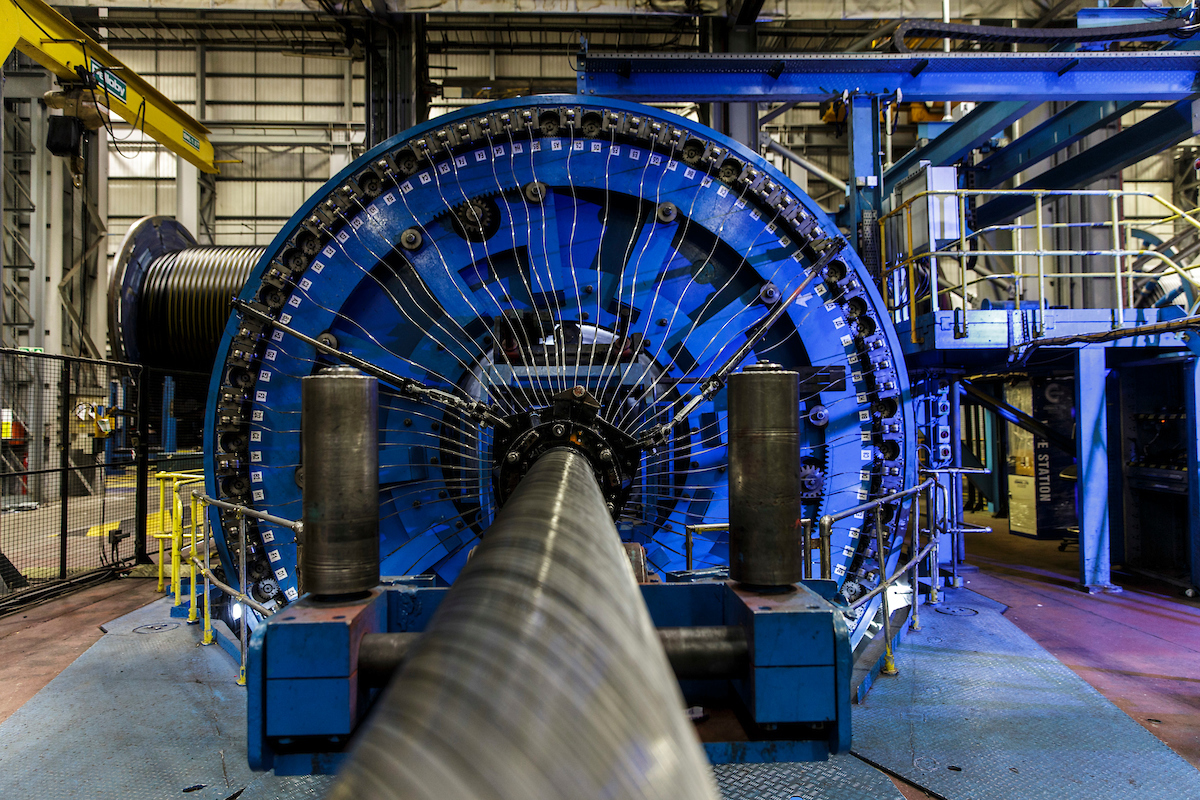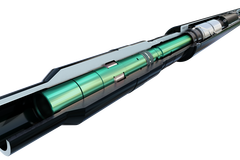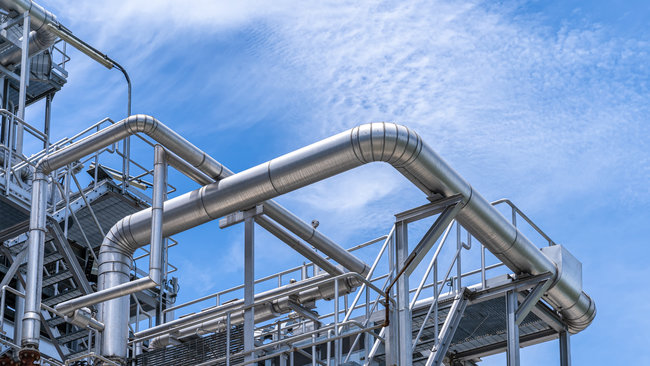The unsung heroes of energy networks, modern flexible pipe systems are faster to install and have better robustness than their rigid counterparts.
Domenico Di Giambattista is both romantic and pragmatic. “The energy world is all about connection,” he says. As Vice President, Flexible Pipe Systems (FPS) at Baker Hughes, he is passionate about the pipe systems that are critical to delivering energy to the world.

“Flexible pipe systems are a range of different products, for different purposes,” says Di Giambattista, a mechanical engineer with a master’s in project management and a long career working in the energy industry. He holds up a pipe sample to show the cross-section of six different layers, each servicing a precise purpose to ensure optimum performance.
“Whether it’s internal pressure, external pressure, permeation, axial tension, abrasion resistance or thermal insulation, these layers combine to deliver a system of products that enable the flow of liquid and gas. The energy world needs connection and the best way to connect energy and fuel is pipe.”
For much of the history of the industry, rigid steel pipes have been the main conduits for hydrocarbons, with flexible pipe being in the minority. “Flexible pipes today represent 10-15% of the installed base,” says Di Giambattista.
The rise of the bendy brigade
The technology to design, manufacture and install flexible pipe systems is evolving and gaining traction.
Late in 2022, the Baker Hughes FPS site at Newcastle in the UK celebrated 25 years of operation. We welcomed customers from around the world to tour the manufacturing, innovation and testing facility and to discuss the role flexible pipe systems to advance the world’s energy transition. Its sister facility in the bay of Rio in Brazil celebrated its 15th anniversary at the same time.

It was a stellar year for the FPS Offshore team, who saw record orders by year end. “Whenever you have an offshore upstream subsea application, flexible pipe gives you an advantage,” says Di Giambattista. “It can help to simplify your field layouts.”
Installation is also faster and easier with flexible pipe systems. “As flexible pipes are manufactured onshore and come ready to install, they significantly minimize the need for offshore welding so you can install them much more quickly - up to 12 times faster depending on the method. Greater fleet availability for the transportation of flexibles also contributes to helping you with faster deployment and better execution certainty.”
Making a strong, CO2-resistant flexible pipe
“The raw material of an offshore flexible pipe is mainly metal and polymer,” explains Di Giambattista. “Metallic layers are used for strength, to prevent hydrostatic collapse, provide axial strength and ensure pressure containment. These layers are each constructed in such a way as to allow the pipe to bend. Both stainless and carbon steel grades are used.
Polymer is extruded over the pipe to form a fluid-containment layer, including one to keep the fluid in the bore and another to keep seawater from causing corrosion to the carbon steels. Other polymer layers are applied in tape form to provide insulation and prevent wire buckling amongst other uses. The pipes are finished with end-fitting components to each customer’s specifications.

“The characteristic of our pipe gives us a technical advantage,” says Di Giambattista. “Our material and manufacturing technology has been demonstrated to have strong resistance to corrosion in a CO2-rich environment.”
The problem known in the industry as SCC-CO2 – stress corrosion cracking due to high CO2 exposure – is where flexible pipes from some other manufacturers had shown damage in offshore environments. In 2017, Brazil’s National Petroleum Agency issued a failure mode alert when it first identified SCC-CO2 had caused broken tensile armor wires on a flexible pipe installation.
Baker Hughes had not experienced issues with its pipes but embarked on what is now a five-year research and development program to prove its FPS technology. That program includes significant small, medium, and full-scale testing as well as examination of flexible pipes recovered from oil fields.
In March 2021, Lloyd’s Register issued Baker Hughes with a design appraisal document (DAD) to validate its flexible pipe-testing program results, a major technology milestone for the company and a critical step towards showing that flexible pipe systems are a viable solution even in high CO2 offshore oil fields.
“It has been a long journey of testing and developing new technology to show that our pipes have the capability to resist this kind of environment,” says Di Giambattista. ‘’I am very proud of the team and their achievement.’’ he adds.

Flexing into CCUS
Based on the product’s capability and track record in CO2-rich environments, Baker Hughes’ flexible pipes are equally suitable for use in the growing carbon capture, utilization, and storage (CCUS) industry. "There are clear value propositions for our product in CCUS. For example, a shallow water dynamic application requires a technology that can withstand CO2 and a high-fatigue environment. Only an unbonded flexible pipe has a proven track record in both.” says Di Giambattista.
When used as infield flowlines, the faster installation of flexible pipes can lead to a lower total-installed cost than rigid pipes, but also significant schedule benefits. Both important wins in CCUS project considerations.
And CCUS projects are growing. “In Europe, there are new projects coming up, in the UK, in Norway’’ he reflects. So far, Baker Hughes has delivered numerous flexible pipe projects currently in operation in CO2 rich applications.
And as the future of energy continues to discover and prove the potential of hydrogen and geothermal energy to replace hydrocarbons, Baker Hughes’ non-metallic flexible pipe systems are suitable for both applications too.
Flexible pipe systems are connecting the fuels of today, and at the same time the technology is honed for the fuels of the future, says Di Giambattista. “That is where the power of the full Baker Hughes technology suite comes in. We are using the technology that exists today to make something that is going to serve the technology we want for tomorrow. It is good to connect, but we need to connect to something. We are working with our partners to develop those new ‘somethings’. And then we are going to connect.”
To learn more about the role of composite pipelines in the energy transition, please click here.
Energy Forward Stories
Sign up to stay up to date on the latest innovations and people shaping the future of our industry.





